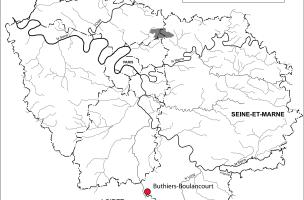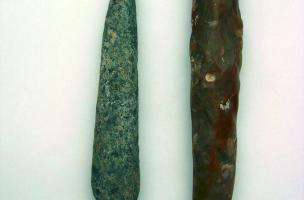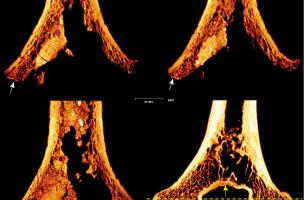You are here
A surgical operation of 7000 years ago : the oldest amputation discovered in France
The excavation of the Early Neolithic site of Buthiers-Boulancourt (Seine-et-Marne) revealed to the Inrap archaeologists the most ancient case, in France, of an amputation.This successful surgical intervention was practised, 6,900 years ago, on an elderly man. These results have just been published in the international review, Antiquity.
The Buthiers-Boulancourt site has revealed seven Neolithic dwellings of Danubian tradition, characteristic of the late "Blicquy-Villeneuve-Saint-Germain" culture dated 4900-4700 BC. Two small burial groups have also been excavated. They contained two or three characteristic graves in individual ditches.
The amputation
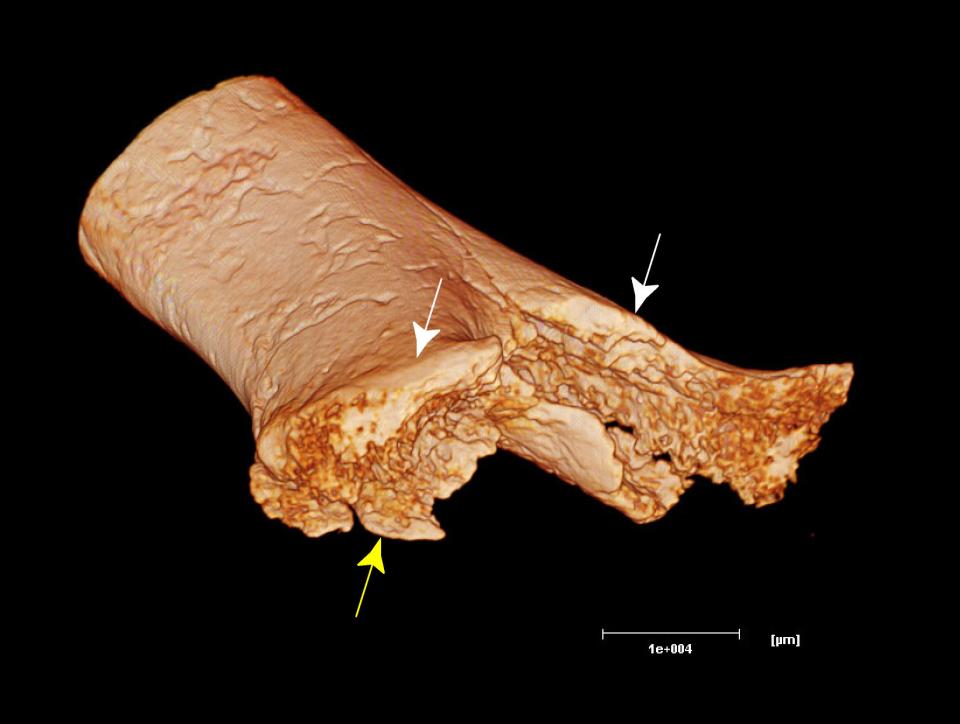
As soon as the bones were found, anthropologists and archaeologists expressed the hypothesis of an amputation, based on morphological observations. A study shows today that the distal end of the humerus shows a clear cut whose origin is traumatic rather than a malformation. Radiological and mictrotomographic examination resulted in a three-dimensional reconstruction of the bone. All the images show signs of healing of the bone. The cuts are located at a place where the bone was particularly robust, and difficult to cut, especially if using flint. It would have been much easier to cut on the diaphysis.
Whatever the reason of the traumatism (accident, etc.), the forearm was partially severed by breaking the bone. The surgical intervention was practised by cutting only what was still attached. Thus, it was not an accidental amputation but a true medical choice. This operation can be reconstituted: the surgeon proceeded from the anterior towards the posterior side and the weight of the forearm, perhaps aided by the surgeon, caused the last few millimetres of cortical bone to break away, as when cutting a piËce of wood. The arm was probably slightly raised to allow the elbow to be extended. The fact that the bone healed shows that the patient survived. The absence of infection showed that the aseptic conditions were relatively good.
Amputation was extremely rare in Prehistory and until now only two cases dating from the Early Neolithic period in western Europe have been found: Sondershausen in the east of Germany and Vedrovice, in Moravia (Czech Republic). Buthiers-Boulancourt is thus today the oldest case of amputation in France. This discovery had benefitted from the latest techniques of archaeological and of medical imaging.
The grave goods
These prestigious grave goods, the unusual dimensions of the grave suggest that the occupant benefitted from a special status within the group. He was an elderly man, suffering from osteoarthritis and toothless. Even though we cannot speculate on his social status, is seems that he was taken in charge by his group and integrated in it in spite of his disability.
We thus now know that 7000 years ago medical knowledge was much more advanced than generally imagined, and that within agro-pastoral communities social rules were complex.
Références
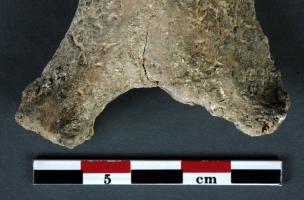
Mahaut Tyrrell
Media communication
Inrap, media partnerships and relations department
+33 (0)1 40 08 80 24
mahaut.tyrrell [at] inrap.fr
Sophie Jahnichen
Cultural development and communication
Inrap, Centre – Île-de-France
+33 (0)1 41 83 75 51
sophie.jahnichen [at] inrap.fr


